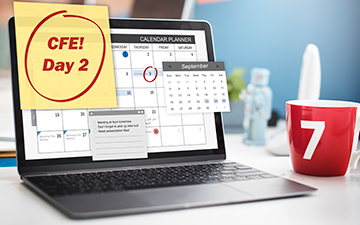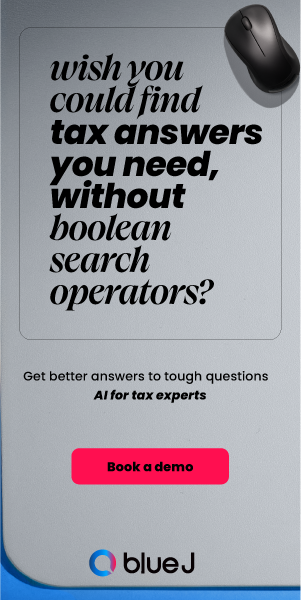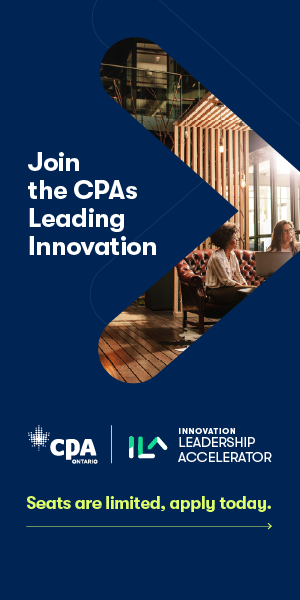Day 2 strategy for the Common Final Examination (CFE)

Part four of a five-part series from Andrew Knapman, CPA
Editor's Note, 2021: Since the writing of this column in 2019, the common part of Day 2 is FR/MA. As Andrew notes, it was mostly FR previously, but there is more coverage of MA currently.
VANCOUVER – Day 2 of the CPA Common Final Examination (CFE) is one of the more daunting days of the CFE due to the sheer scale of the exam, with one huge case study including lots and lots of information. You are provided an additional hour for this exam though.
I passed the CFE successfully last year and I am now a chartered professional accountant. My memories of the CPA professional education program and the CFE are still fresh in my mind. I remember feeling that, despite it being a very difficult exam, I wasn’t too constrained for time.
I hope you’ve been following this five-part series but you should definitely read my Day 1 strategy blog post. Once again, there is usually a clear template that CPA PEP follows for Day 2 of the CFE, which is as follows:
1. The first part of the exam will usually be financial reporting questions, typically with around four to six assessment opportunities.
2. The second part of the exam will be strategic issues relating to your elective competency (but potentially touching other competencies also).
3. The final part of the exam will again be more operational issues, again potentially touching any competency but most likely your elective.
I am not saying with 100 per cent certainty that this is the exam template. However, for all of the practice cases I wrote and the CFE itself, this is how the exam is presented and this is what I prepared for. With that in mind, let’s look at the strategy:
 |
Andrew Knapman, CPA, passed the Common Final Examination in 2018. |
Reading and Planning (One Hour, 15 Minutes)
As with Day 1, I’m not going to discuss how to read and plan as everybody has their own style and the CPA teach you how to do it relentlessly. I suggest one hour, 15 minutes for Day 2, but many people advocate for one hour, 30 minutes. There is a lot of information on Day 2 and a lot of it doesn’t pertain to you, as the information could be for the other electives (you all get the same case!).
It’s really important to decipher what is and is not relevant to you in your plan to allow you to quickly flip back and forth to what is relevant. Don’t get bogged down by irrelevant information!
Situational Assessment (None)
You do not prepare a situational assessment on Day 2. There are no marks for this and it’s just a waste of time. Get straight into the issues!
Financial Reporting Issues (60 Minutes)
Our Capstone 2 instructor constantly told us not to spend too long on the FR issues, as the focus of Day 2 is about your elective knowledge depth. You can make up for a weak FR performance in Day 3. You cannot make up for a weak performance on your elective competency.
Due to this, I actually answered my elective issues before the FR issues to make sure I had enough time and gave them the proper attention. Luckily, I managed to finish with my elective issues quicker than expected, giving me more time for the FR questions at the end of the exam. This was a good strategy, as the FR questions were a total gong show. I spent way longer than the recommended 60 minutes.
Anyway, you approach all FR questions the same. The program will prepare you well for this, though I added one small section. Remember the acronym IGARI and you know your template:
Issue – Discuss the FR issue and integrate case facts into the issue.
GAAP – Discuss the ASPE/IFRS standards that need to be considered based on the issue at hand.
Analysis – Determine whether each of the standards are being met and use case facts to explain why or why not.
Recommendation – Recommend a course of action. Was the accounting procedure performed correctly? If not, what adjustments need to be made? Write the journal entry if necessary.
Impact – The program does not include this one in its approach but you will get marks for discussing the impact of any recommendation made. Does the adjustment help profitability, meet company goals, improve covenant compliance? Say it!
The key to showing competency here is obviously your technical knowledge. That’s on you. I’m just giving you a template for communicating as the professional education program wants it.
Elective Issues (2 Hours, 15 Minutes)
This is where you should focus most of your time as this is the most important part of Day 2. If you fail to show a depth of knowledge in this section of the exam, you will likely fail the entire CFE. No pressure!
It’s difficult to give specific advice to this section of the exam as everybody is sitting different electives and the number of possible questions is almost endless. I sat performance management, which is in the minority of writers, so my tips in that area may not be very useful to most people. You will likely know how to approach strategic issues of your chosen elective better than I would, so prepare accordingly.
Most topics have an approach you can use to ensure getting a competent mark. For example:
Assurance – WIR analysis for internal controls, URAMP for audit planning.
Tax – Similar to IGARI in financial reporting, but instead of GAAP standards use ITA standards
Finance & PM – Similar to management accounting for the most part, you always need a comprehensive quantitative analysis, a qualitative analysis with at least three or four pros and cons and a recommendation.
That’s just a few strategies for certain questions. Make sure you have a clear strategy for approaching each question that can be asked, as your approach is just as important as your technical knowledge. The more you answer practice cases in Capstone 2 (and debrief them), the more you will understand exactly how to approach each question.
As much as CPA PEP may seem like an endless amount of information to know, if you develop strategies for approaching each broad category of question that can be asked, you will be ticking all the right boxes for competent grades.
Operational Issues (30 Minutes)
See my blog post on CFE strategy for Day 1, as the approach for these are similar — only you wouldn’t link to a situational analysis as there isn’t one to link to!
Conclusion (0 Minutes)
You do not prepare an overall conclusion on Day 2 as there are no marks for it. It would be a waste of time. Instead, make sure to conclude and recommend at the end of each strategic and operational issue as there are marks there, just not for an overall conclusion.
I hope this five-part series is helping you to understand the CFE process. It’s difficult to provide a strategy for each competency in an article, as there are so many topics that could be covered. I’d be writing for days if I discussed each and every approach to every question that could come up.
Luckily, financial reporting and management accounting can generally use the same approach for each question; it’s the electives that need bespoke approaches depending on what is asked — but you will learn these as you progress through CPA PEP (particularly Capstone 2).
Make sure you check back soon for my next blog post, on Day 3 of the CPA PEP Common Final Examination.
Andrew Knapman, CPA, is Canadian Accountant's student blogger. He lives in Vancouver, B.C. and passed the Common Final Examination in 2018. Connect with Andrew through his LinkedIn profile. The views expressed in this guest blog are his own.









(0) Comments